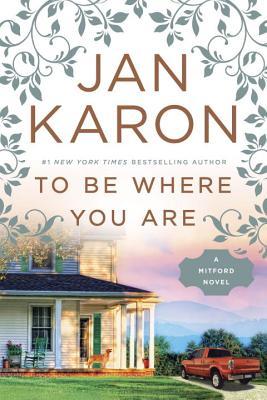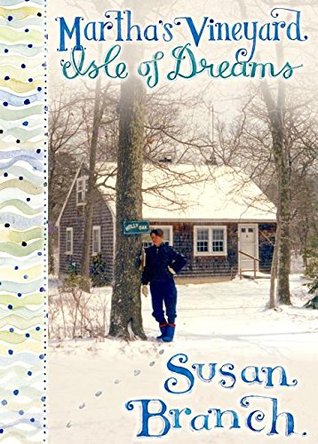I have been re-working my planning sessions for this new term to make them more simplified and take less time so that I can actually write down a plan for the coming week for each of our three children. My previous teaching planner(which I used as a classroom teacher and a homeschooling mom) caused too many inefficiencies which made me run out of mental energy long before I felt I was truly prepared.
So far, my new planning strategies have worked well the last three weeks and I'm no longer stressing on the weekends about getting enough time to sit and plan.The following is what I have been able to pull together to work with Kate for this winter term. It is a work-in-progress. Some days we roll easily from one activity to the next, other days seem like we hardly get anything worthwhile done.
She has shown much progress in understanding letter sounds and formation, so with this encouragement, I have gained inspiration and insight into what skills she needs to work on and what she has already mastered to build further upon.
My biggest issue so far in her daily lessons is fitting in time to make it happen without losing too much momentum with Laura's work. Thankfully Laura has shown a lot of progress in her reading since September and in her ability to work independently on a list of tasks. So with that as my goal, I made up a list of activities that Laura could work on without needing my undivided attention so that I could work with Kate yet still be available to watch over Laura's work and answer questions.
And of course, I still have Seth's Year 9 studies to oversee just in case I get bored.
I worked with some books I have for children with Down Syndrome and also some ideas from her therapists and also one I follow on Pinterest to give me some practical ideas to work on. The books have helpful worksheets in the Appendix to use for practice strokes.
But some of the ideas we are working on are abstract, like finding the 'middle' and required some thinking as to how to implement them. Others are more concrete like strengthening hands and fingers for writing by scissor cutting and stringing items on laces or dowel rods. (In the following photos you may notice that her nose has incision marks covered with ointment and that's because she underwent more tear duct surgery the second week of January. She has had a great recovery and we are still working on healing the marks.)
One of the ideas I saw on the Pinterest therapist's boards was controlling coloring by creating a physical barrier to the area being colored. The barrier was made with Wikki Stix. While I was looking for them in various local stores, her amazing OT therapist pulled some out during a therapy session. It worked quite well for Kate so I came home and added them to my Amazon order being shipped to my parents' over Christmas. They are coated with wax so they stick to the page, but can easily be shaped and removed at any point. When they eventually lose their tackiness, you can just use another one. As you can see from the pictures below, it helps Kate to concentrate on the targeted area for her coloring and keeps her from scribbling in random places like she often does. This is her best coloring work yet.
 |
| I have used these books with all my kids and they are perfect for early motor skills. |
Later in the day, we took those segments of straw she had cut and she strung them on two pieces of Wikki Sticks bonded together. You can buy it in long pieces suitable for this type of activity, but I bought a small container of the shorter pieces so I make do. Because it is more stiff than our other lacing, but not as rigid as the dowels we use, it is more relaxing for her, yet still requires good eye attention. Kate likes to look away and still continue to try to complete a task, so having to sit and focus with her eyes is good practice for her.
Her letter recognition skills are gaining so quickly. I thought we would be laboring on one letter for weeks, but no, she catches on very quickly and we are working on associating the sounds with the various letters that she could already make. But the letter that we began forming first was F and I thought since the name of our kitty starts with F we could work at learning to say /f/. Well it took a little over a week of practicing holding the bottom lip with our teeth and controlling the blowing, but by adding a definite head bob when she exaled, she got the correct /f/ sound. So now she routinely pronounces an emphatic /f/ with a full head-bob and downward pull of her chin when she wants to talk about Flossy the kitty and her incessantly messy food dish.
I felt so confident in our unexpected success that I started in on /sh/ by getting her to clench her teeth, perhaps a little too tricky because it seemed to require something for her to clench her teeth on. So now we sit around together each with a clean half of an ear swab in between our closed teeth saying /sh/. She is just starting to consistently get the air to blow out through her closed teeth. I have no photos of us doing that so you are spared the ridiculousness of that scene.
So back to practicing recognizing letters.
I am working on her knowing F, D, and L so I took the juice can lids I have used for other games and attached two of each of those three letters and then added a couple more(B, T, and M) to keep the matching game challenging. We use our magnet wands just for fun although it does distract her sometimes to find the correcting matching letters. She is signing the word 'same' for some matches she has made.
She is able to make all six of these letter sounds and we have word associations for all of them, so I think she likely already knows them. What she is unable to do is blend two sounds smoothly and consecutively to form a complete word. So while she can make all the sounds for a word like APPLE, she cannot yet say the /a/-/p/-/l/ sounds fast enough to make it understood as the word APPLE.
Enter the Cheerios.
By placing three Cheerios on the table and identifying them as BOTTOM, TOP and finally MIDDLE, I asked her to eat the MIDDLE one. She caught on quickly and consistently picked the MIDDLE one after it was replaced. And like she usually does, she attempted to change the rules of the game very quickly, so we finished that part of the activity and lined up the three Cheerios next to her magnetic writing tablet from Handwriting/Learning Without Tears to reinforce where the proper lines start for the letter F since she often wants to make it into an E. We did this about three times pointing to the various position of the lined up Cheerios and then cleaned everything up.
The next attempt to work on the concept of 'middle' was to build a block tower using a blue block to show the 'middle' of the tower. Of course for Kate, the most fun was knocking down the tower thinking she was ruining the game. But she willing rebuilt it while I emphasized the position of the blocks as BOTTOM, MIDDLE, and TOP.
Then as you can see in the photos below, we lined those blocks up in the same way we had done with the Cheerios next to the magnetic writing tablet to identify the placement of the strokes for F.These activities do not take much time nor are they all done everyday. We work on different things depending on both of our moods and schedule. A big key to what we do together is help her to take something she already knows and add something new to that in order to gain progress in that new skill or concept. Because she is non-verbal, I rely on her communicative abilities in other ways to make sure I know what she is saying. We spend 24/7 together and know the same routines so our ability to communicate is relatively unhindered by her lack of speech.
While we were with Kate in the Recovery area of the Surgical Day Unit waiting for her be discharged from the children's hospital, the attending nurse was handing off her patients to a colleague while she had her lunch break. The incoming nurse was listening and reading over Kate's chart at the foot of her bed. The out-going nurse was giving her a summary of Kate's recovery and while I was leaning over Kate helping her drink water, I heard the nurse say to her colleague that while Kate is nonverbal, "Mom is able to understand her needs and care for her quite well". Of course, that made my heart glow, but I was surprised by the astuteness of the busy nurse and heartened that while we certainly hope for Kate to progress in her speech, her life is filled with kind people who care for her and meet her where she is at.









































































